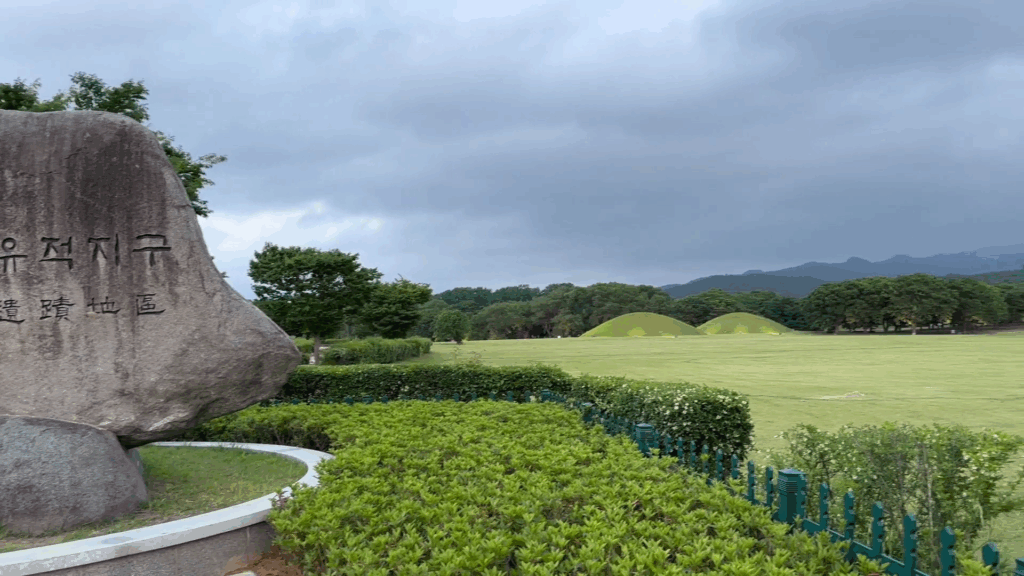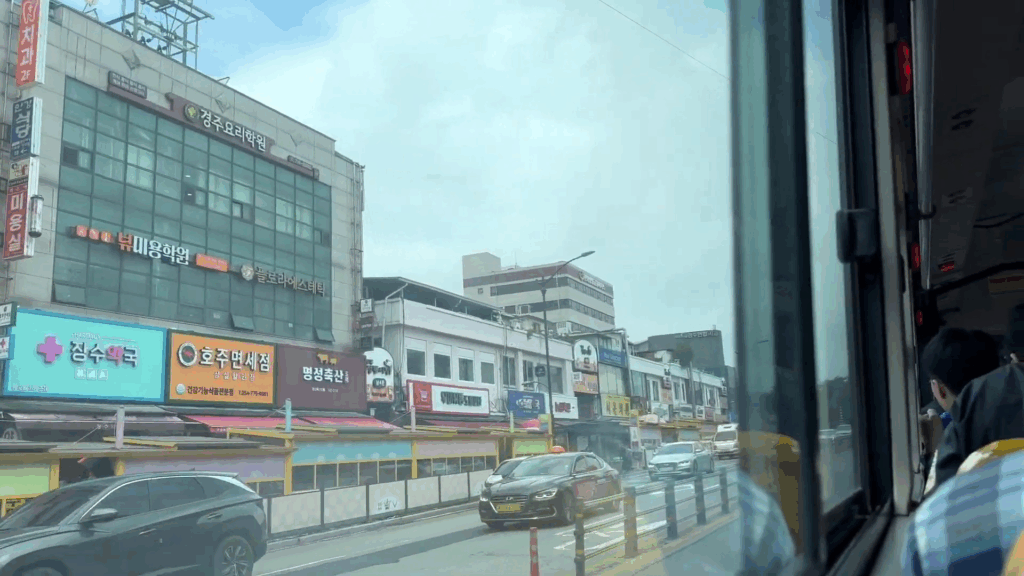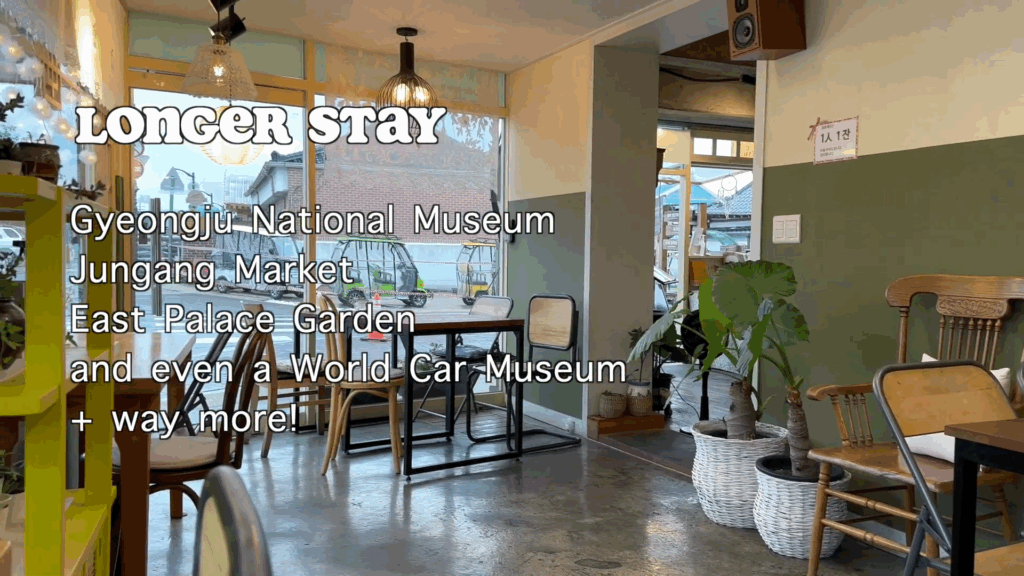Hello! Planning a domestic trip in Korea these days? I recently watched a YouTube video that gave an impressively thorough guide to Gyeongju — from how to get there from Seoul to must-visit spots, laid out for either one day or two. As someone who loves travelling in Korea, I found the info so helpful I wanted to share it with you. Whether you have one day or two, this guide will help you make the most of your Gyeongju trip.

Getting from Seoul to Gyeongju
How do you start your Gyeongju trip? From Seoul you have two main options: taking the KTX high-speed train, or the express bus. The video recommended the bus. At first I thought “of course the KTX is faster so that’s better”, but there’s a reason the bus was favored. The bus ends up arriving in central Gyeongju, whereas the KTX goes to Singyeongju Station and then you have to take a bus or taxi about 15 minutes to reach the city. The express bus costs about ₩32,000 (around US $24) and takes about 3.5 hours. It may take an hour more than the KTX, but in the bus you have more comfort and you arrive right in the heart of town.

Day 1 – Core City Sightseeing
Begin your first day exploring Gyeongju’s city centre. A highlight is 황리단길 (Hwangnidan-gil) — a charming street lined with traditional hanok-style cafés and shops. It’s beautiful in daylight, and the mood at night is equally magical. Most shops close around 9 PM, so keep that in mind. One surprising detail: even Starbucks, a convenience store, and a gas station in the area were built in hanok style!

Also in the city you’ll find the royal tombs — large grassy mounds that served as burial sites for kings, queens, and nobles. One site has 23 such tombs and is designated a UNESCO World Heritage area. Nearby is **첨성대 (Cheomseongdae) — a 7th-century observatory, considered the oldest in Asia — beautiful by day, and especially lovely when lit up at night.
Day 1 Evening – Golden Hour & Night Views
The city transforms at night, and spending at least one night in Gyeongju is strongly recommended. Visit 안압지 (Donggung Palace and Wolji Pond) at dusk — built around 679 CE, this artificial pond with its illuminated trees and calm water creates a dreamy scene. Entrance is about ₩3,000 (around US $2).
Next, head to 월정교 (Woljeonggyo Bridge) — Korea’s largest wooden bridge, whose name means “moon’s reflection.” The nearby 교촌한옥마을 (Gyochon Traditional Village) is filled with hanok-style houses, shops, and restaurants—walking here feels like stepping into a Korean drama.
Day 2 – Beyond the City Centre
If you stay two days or more, venture outside the city centre to explore even deeper. A key stop is 불국사 (Bulguksa Temple) — a magnificent Buddhist temple from the 7th century and a UNESCO site. The temple is accessible by bus in about an hour and the entrance is often free.
Nearby is 석굴암 (Seokguram Grotto) — a remarkable stone grotto containing a serene Buddha statue, reachable by bus from Bulguksa. Then further north about 20 minutes lies the 보문관광단지 (Bomun Tourist Complex)—resorts, amusement park, and 경주월드 (Gyeongju World Theme Park). The theme park costs around US $40 for full-day entry.
A relaxing walk around 보문호수 (Bomun Lake) is especially beautiful during cherry-blossom season or in the autumn.
Travel Tips & Accommodation
For accommodation, you’ll find great value. One videographer stayed at an Airbnb 3 minutes from the bus terminal for just US $36 (≈ ₩48,000) for one night. Location close to main access is a big plus.

Make sure to stay at least one night — those night views of Anapji and Woljeonggyo are said to be “100× more beautiful” after dark. Gyeongju’s city centre is very walkable, so you don’t need to rely heavily on buses, though the outer sites like Bulguksa will require bus travel.
It’s worth remembering that Gyeongju has a relaxed and friendly atmosphere. With its mix of ancient history and modern cafés, it offers a perfect place to experience Korean culture outside of the hustle of Seoul.
Final Thoughts
In short: Gyeongju is a city where Korea’s history, culture, and scenic beauty converge. Even with just one day, you can see key sights, but staying two days or more allows a deeper experience—and one full of memorable moments. Especially those evening scenes under the soft glow of lights, you’ll definitely regret skipping them. And if you have even more time, consider adding a side-trip to nearby Busan or Pohang (each about 1 hour away).
